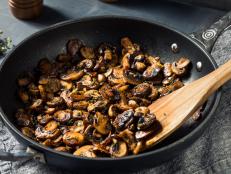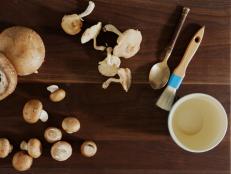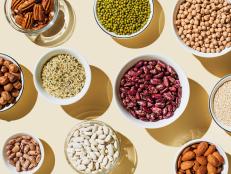What Is Umami?
The taste that goes beyond sweet, salty, sour and bitter.


Christopher Testani , Christopher Testani 2013
Get The All-New Food Network Kitchen App
Download Food Network Kitchen now to sign up and take advantage of the latest offer and get 40+ live classes a week, hundreds of on-demand cooking classes, in-app grocery ordering and so much more.
You may have heard the term "umami" thrown around quite a bit in recent years (heck, there's even a burger joint named Umami Burger and a cookbook called Umami Bomb), but it's hard to know — or explain — exactly what it is.
Umami is the latest addition to the list of tastes that the taste receptors in our tongues can perceive. The others are sweet, salty, sour and bitter. It's said that 95% of the population can detect it to some degree, although umami can be subtler than the other four tastes.
Umami was identified in Tokyo in 1908, but it didn't gain mainstream attention in the United States until much later. Now it's a coveted taste that chefs try to incorporate in their own dishes.
"In technical terms, it is the flavor of glutamates and nucleotides, but in the simplest terms, umami is the flavor of 'savory,'" says Chef Nate Henssler, executive chef and partner at Portsmith and Utopian Tailgate in Chicago. "When we taste something and our mouth waters, this is umami."
Chef Erling Wu-Bower, of Chicago's Pacific Standard Time, thinks of umami as funk. "It's about that funky, intense, concentrated flavor that the human palate really enjoys," he says. "What umami does is that it intensifies other flavors, particularly salty and acidic flavors, and gives any dish you make an added dimension."
Umami occurs naturally in some foods like shiitake mushrooms, fatty meats, tomatoes, shrimp and aged cheeses like Parmigiano Reggiano. It also can be found in seasonings, most prominently monosodium glutamate and more recently umami seasonings that usually contain some dried mushroom powders mixed with other seasonings. It's not uncommon to see condiments with umami in them, whether they are classics like fish sauce and soy sauce or more modern creations like umami mayo and umami bomb paste.
Achieving umami in your dishes
Certain ingredients can lend dishes extra umami just from their natural flavors. "Cooking with tomatoes, mushrooms (especially shiitake), beef (particularly tougher cuts that require long cook times), some cheeses and soy sauce all add umami to your final flavor profile," says Hensler.
Dishes like this umami mushroom risotto, smoky roasted mushrooms (pictured), stuffed rib roast and green bean casserole all demonstrate different ways to bring umami to your table.
Asian-inspired dishes are often rich in umami. Experiment with using condiments like fish sauce or adding in some fermented kimchi or kombu (seaweed). Try out Jet Tila's famous drunken noodles or Michel Nischan's Steamed Black Bass with Kombu Noodles and Mushroom Dashi if you're up for the challenge of creating some funky, umami-filled dishes yourself.
Related Articles:
























































